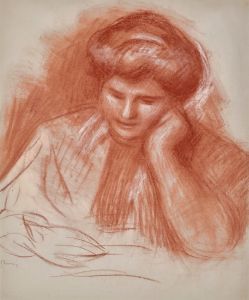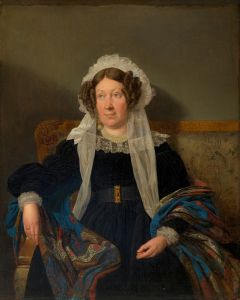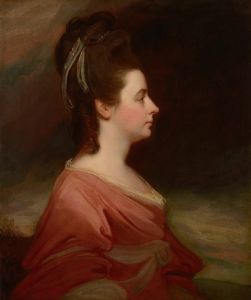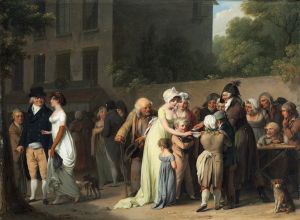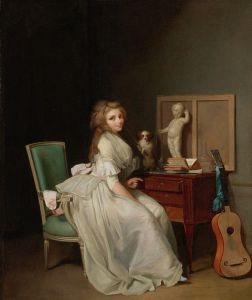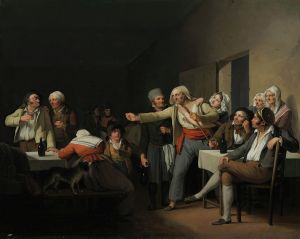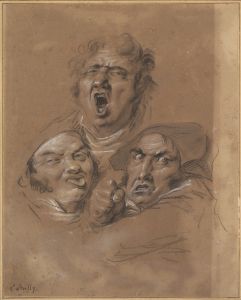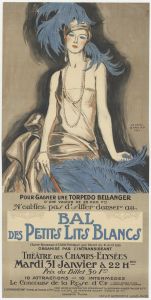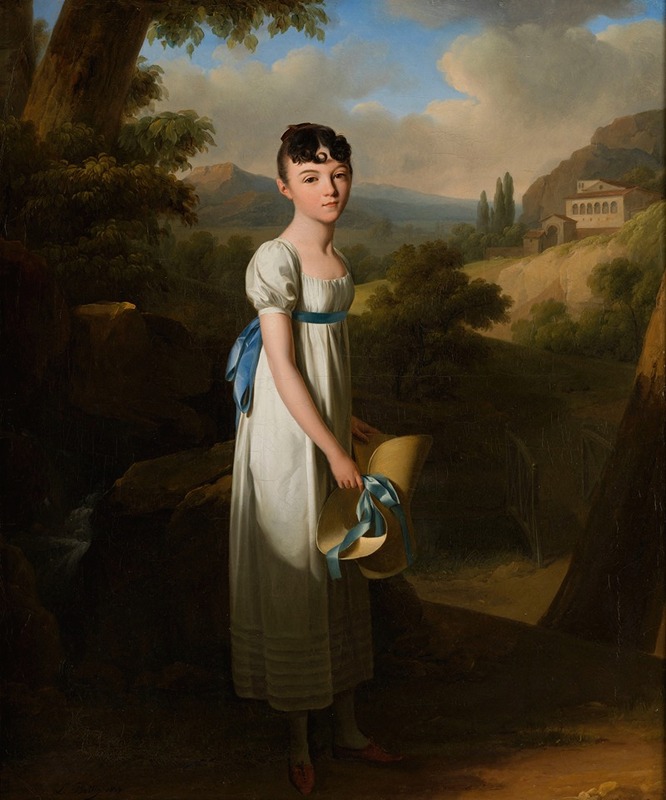
Portrait de Mademoiselle Athénaïs d’Albenas
A hand-painted replica of Louis Léopold Boilly’s masterpiece Portrait de Mademoiselle Athénaïs d’Albenas, meticulously crafted by professional artists to capture the true essence of the original. Each piece is created with museum-quality canvas and rare mineral pigments, carefully painted by experienced artists with delicate brushstrokes and rich, layered colors to perfectly recreate the texture of the original artwork. Unlike machine-printed reproductions, this hand-painted version brings the painting to life, infused with the artist’s emotions and skill in every stroke. Whether for personal collection or home decoration, it instantly elevates the artistic atmosphere of any space.
Louis Léopold Boilly was a French painter and draftsman, renowned for his detailed and vivid portrayals of Parisian life during the late 18th and early 19th centuries. Among his extensive body of work is the painting "Portrait de Mademoiselle Athénaïs d’Albenas." This portrait exemplifies Boilly's skill in capturing the subtleties of human expression and the elegance of his subjects.
Boilly was born on July 5, 1761, in La Bassée, France. He began his artistic career at a young age, initially studying under local artists before moving to Paris in the early 1780s. His arrival in Paris coincided with a period of significant social and political upheaval, which Boilly documented through his art. He became known for his genre scenes and portraits, which often depicted the bourgeoisie and the evolving social landscape of France.
The "Portrait de Mademoiselle Athénaïs d’Albenas" is a testament to Boilly's mastery of portraiture. Although specific details about the sitter, Mademoiselle Athénaïs d’Albenas, are scarce, the painting itself provides insight into the fashion and aesthetics of the time. Boilly's portraits are characterized by their meticulous attention to detail, particularly in the rendering of fabrics and textures, as well as the lifelike quality of his subjects' expressions.
In this portrait, Boilly employs a refined color palette and precise brushwork to convey the elegance and poise of Mademoiselle d’Albenas. The sitter is depicted with a serene expression, her gaze directed slightly away from the viewer, which was a common pose in portraiture of that era. The background is typically understated, allowing the focus to remain on the subject. Boilly's ability to capture the nuances of light and shadow adds depth to the portrait, enhancing the three-dimensionality of the figure.
Boilly's work is often associated with the transition from Rococo to Neoclassicism, and his portraits reflect this shift in artistic style. While retaining the delicate charm of Rococo, his paintings also exhibit the clarity and structure associated with Neoclassicism. This blend of styles is evident in the "Portrait de Mademoiselle Athénaïs d’Albenas," where the elegance of the composition is matched by the precision of the execution.
Throughout his career, Boilly produced over 5,000 works, including portraits, genre scenes, and still lifes. His ability to capture the essence of his time and the people within it has made his work an invaluable resource for understanding the cultural and social dynamics of post-revolutionary France. Boilly's portraits, in particular, offer a window into the lives of the French bourgeoisie, highlighting their fashions, interests, and the subtle shifts in societal norms.
Louis Léopold Boilly passed away on January 4, 1845, in Paris, leaving behind a legacy of art that continues to be celebrated for its historical significance and artistic merit. His portraits, including that of Mademoiselle Athénaïs d’Albenas, remain appreciated for their technical skill and the insight they provide into the era in which they were created.







